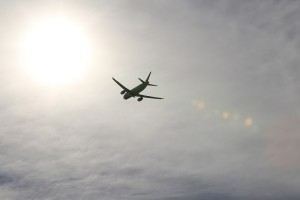Airservices is committed to reducing the environmental impact of aviation. We do this by providing airlines and operators with options for continuous descent approaches, flexible flight tracks (Flextracks) and special air traffic procedures that all have positive effects towards reducing emissions.
Continuous descent approaches
Air traffic control assist aircraft to make safe and efficient descents to their destination airport by using continuous descent approaches reducing fuel consumption, greenhouse gas emissions and aircraft noise.
Landing procedures have traditionally involved aircraft descending in successive steps from cruising altitudes to the runway. In a continuous descent approach the aircraft flies from cruise altitude all the way down to the runway in one smooth and uninterrupted descent. Under ideal circumstances a plane can practically glide into the airport with engines idling. This descent can last anything up to 20 minutes.
Early trials have demonstrated that a continuous descent approach can save as much as 400 kg of fuel per arrival, depending on aircraft size, weather and other air traffic conditions. This means more than a tonne of CO2 reductions per flight.
Around busy airports in congested airspace this can actually be difficult to achieve and is made more complicated by bad weather.
Flextracks
High altitude jet-stream winds can dramatically affect an aircraft’s speed and fuel consumption on long distance flights. Flextracks, which diverge from fixed or direct routes, are designed to use these winds to an aircraft’s advantage and avoid strong headwinds.
Airservices Network Coordination Centre calculates and publishes Flextrack information for airlines flying into and out of Australian airspace offering them the most of prevailing weather patterns and winds to improve flight time and reduce fuel usage, delivering considerable environment benefits through a reduction in emissions and reducing operating costs for airlines.
Flextracks are now being used widely between Australia and airports in Asia and the Middle East.
